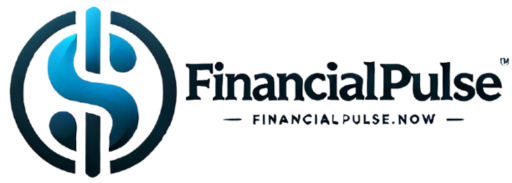Highlights
– High-yield savings accounts offer significantly higher interest rates compared to regular savings accounts.
– High-interest savings accounts provide safety and accessibility with FDIC and NCUA insurance.
– Strategies for maximizing the benefits of high-interest savings accounts include setting up automatic savings plans and understanding account limitations.
Summary
High-yield savings accounts, also known as high-interest savings accounts, are a type of deposit account that offer significantly higher interest rates compared to regular savings accounts. These accounts, typically provided by financial institutions, can pay up to 15 times the national average interest of standard savings accounts, thereby providing a higher rate of return on deposits. Despite having potential restrictions such as higher minimum-balance requirements, the benefits of high-interest rates and superior accessibility often make these accounts a preferred choice for individuals aiming to reach various financial milestones.
High-interest savings accounts have numerous advantages including higher returns, safety and accessibility, assistance in achieving financial goals, and flexibility. The interest rates for these accounts can be 15 times the national average of standard savings accounts, leading to significantly larger growth of savings over time. These accounts are also insured by the Federal Deposit Insurance Corp. (FDIC) and the National Credit Union Association (NCUA), ensuring financial security for account holders. Furthermore, high-interest savings accounts are also highly flexible and do not penalize account holders for accessing their funds, making them an ideal choice for building and maintaining an emergency fund.
Despite the many benefits, high-yield savings accounts also come with certain limitations and drawbacks such as a cap on withdrawals, fluctuating interest rates, and minimum deposit requirements. Furthermore, the interest generated from a high-yield savings account is considered taxable, potentially impacting the overall returns from these accounts. However, these drawbacks are often outweighed by the benefits, making high-yield savings accounts a suitable choice for individuals looking for safer options to grow their savings.
Numerous strategies can be employed to maximize the benefits of high-interest savings accounts, including setting up automatic savings plans, establishing specific savings goals, understanding account limitations, and capitalizing on the power of compound interest. Despite the impact of regulations such as the Federal Reserve’s Regulation D, high-interest savings accounts continue to offer higher returns than traditional savings accounts, making them a popular choice for many savers.
Definition of High-Interest Savings Accounts
A high-yield savings account, also known as a high-interest savings account, is a type of savings account that offers a significantly higher interest rate compared to regular savings accounts. While traditional savings accounts generally offer an average annual percentage yield (APY) of 0.41%, high-yield savings accounts can offer rates of 4.25% or higher. This gives a higher rate of return on your deposits, and due to the compounding of this interest daily or weekly, you can build up a significant amount of money, even with a small initial deposit.
These accounts can pay up to 15 times the national average of a standard savings account. They are considered the overachievers of the banking world as they not only keep your money safe but also work harder to earn you extra cash. They are often FDIC insured and offer most of the same services as regular savings accounts, making them a secure place to store your money.
High-yield savings accounts, despite promising higher returns, may have higher minimum-balance requirements and other restrictions compared to traditional savings accounts. However, the benefits of higher interest rates and excellent accessibility features often outweigh these restrictions. This makes high-yield savings accounts an excellent tool for reaching financial milestones, as they ensure your money is both secure and growing.
Advantages of High-Interest Savings Accounts
Higher Returns
One of the most attractive features of high-yield savings accounts is their potential for higher returns. The average interest rate for traditional savings accounts is currently 0.33%, whereas high-yield accounts typically offer rates between 3.5% and 4.5% or even higher. This significant difference in interest rates can lead to considerably larger growth of savings over time. Indeed, the interest rates on high-yield savings accounts can be up to 15 times the national average, with online banks often offering the highest rates.
Safety and Accessibility
High-yield savings accounts, like traditional savings accounts, are insured by the Federal Deposit Insurance Corp. (FDIC) and the National Credit Union Association (NCUA). This means that deposits are protected up to $250,000 per account per bank, providing account holders with a level of financial security. In addition to their safety, high-yield savings accounts offer excellent accessibility features, allowing account holders to access their funds without penalties. This combination of safety and accessibility makes high-yield savings accounts an ideal vehicle for building and maintaining an emergency fund.
Financial Goals Achievement
High-yield savings accounts are optimal for achieving both short and long-term financial goals. Whether the aim is to build an emergency fund, save for a significant purchase, or simply grow surplus cash, a high-yield savings account provides a secure and efficient method for achieving these goals. The power of compound interest is especially evident in high-yield savings accounts, where higher interest rates lead to significantly faster growth of savings.
Flexibility
During times of stable or rising interest rates, high-yield savings accounts can be more attractive than other products such as Treasury Bills (T-Bills) and certificates of deposit (CDs) because they offer flexibility and higher returns without sacrificing safety. Moreover, compared to products like CDs, high-yield savings accounts allow free access to money, while CDs often penalize for withdrawing funds before the term ends.
Limitations and Drawbacks of High-Interest Savings Accounts
High-yield savings accounts (HYSAs) have several limitations and drawbacks to consider. One of the primary restrictions is the limit on withdrawals, which in most cases is capped at six per month. This can make accessing funds more difficult, especially in case of emergencies. Although Regulation D, which initially set the limit, was amended in 2020, most banks have continued to uphold this restriction.
Another major drawback is the variable nature of the interest rates. The interest rates on HYSAs can change at any time, which means the advertised annual percentage yield (APY) when you open the account may not be maintained. As such, the interest earned on HYSAs may not always outpace inflation.
The minimum deposit requirements and balance thresholds can also pose challenges, particularly for individuals with smaller savings or those just starting their savings journey. Some high-yield savings accounts require a minimum deposit to open the account and a minimum balance to be maintained at all times, which could be a disadvantage for people with limited funds.
Many financial institutions offering HYSAs limit their features or offer few or no other products. For instance, many don’t offer checking accounts, and few provide ATM cards. This could potentially limit the convenience and utility of these accounts for some users.
Online-only banks have been at the forefront of offering high-yield savings accounts. While the lack of overhead costs associated with physical branches allows these banks to offer higher interest yields, it also means users miss out on the traditional banking experience offered by brick-and-mortar institutions.
Lastly, it’s worth noting that the interest generated from a high-yield savings account is considered taxable. This could potentially impact the overall returns from these accounts. Despite these drawbacks, high-yield savings accounts can be a suitable choice for individuals looking for safer options to grow their savings, albeit slower, compared to riskier market investments like stocks and bonds.
Strategies to Maximize the Benefits of High-Interest Savings Accounts
High-Interest Savings Accounts (HYSAs) are a popular tool for achieving short-term financial goals such as building an emergency fund or saving for major purchases. To maximize the benefits of HYSAs, several strategies can be employed.
Automatic Savings Plans
Setting up automatic savings plans is a highly recommended strategy for making the most of a high-yield savings account. By setting a specific amount to be transferred from a checking account to a savings account on a regular basis, individuals can ensure consistent savings without having to think about it.
Specific Savings Goals
Having a clear and specific savings goal is vital to maximizing savings in a high-yield account. Whether the goal is to build an emergency fund, save for a child’s education, or for a major purchase such as a house or car, having a concrete goal can motivate account holders to remain committed and disciplined. Additionally, having multiple savings accounts can help in organizing different savings goals, such as one for emergencies and another for vacations.
Understanding Limitations
While high-yield savings accounts offer higher interest rates, they do have more rules and restrictions to follow than most standard savings accounts. Most HYSAs limit withdrawals to six per month, which could restrict access to funds. Furthermore, some HYSAs have minimum balance requirements, transaction fees or limits, and slower processing times. Therefore, understanding these limitations is crucial for making informed decisions and optimizing the benefits of HYSAs.
Capitalizing on Compound Interest
One of the key benefits of high-yield savings accounts is the potential for compound interest. Compounding is the process of adding interest to the principal balance, which can result in significant growth over time. This is especially beneficial for those with long-term savings goals, as the interest can considerably boost the account balance.
Impact of Regulations on High-Interest Savings Accounts
Regulatory bodies such as the Federal Reserve play a significant role in governing high-interest savings accounts. A key regulation is known as Regulation D, which is designed to ensure that banks and credit unions have enough cash on hand to cover customer withdrawals. This regulation affects how much money financial institutions can loan out, and at what interest rates.
Regulation D previously limited withdrawals from savings accounts to six per month. However, in response to the economic turmoil caused by the COVID-19 pandemic in 2020, the Federal Reserve issued an interim final rule that abolished the six-per-month limit. Despite the removal of this federal restriction, many banks and credit unions have chosen to keep limitations in place.
The changes to Regulation D have not appeared to significantly affect the personal savings rate, which is the portion of disposable personal income saved by households. Although the six-withdrawal rule has been abolished, most savings accounts continue to limit withdrawals during a statement cycle.
High-yield savings account interest rates can fluctuate based on changes in the Fed rate. These fluctuations, alongside the restrictions imposed by financial institutions, can impact how consumers utilize their high-interest savings accounts. For example, these accounts are often used to save up for large purchases such as houses or cars.
Changes in interest rates can also be influenced by the market, as seen with the Wealth One Bank of Canada increasing its regular savings account and TFSA interest rate from 2.50% to 3.00%. Despite the regulations and limitations, high-interest savings accounts still offer higher returns than traditional savings accounts, making them a popular choice for many savers.
How to Open a High-Interest Savings Account
Opening a high-interest savings account can be a beneficial move for individuals in any stage of life and with varying money-related goals. High-yield savings accounts, a type of high-interest savings account, are particularly popular because they often require no minimum opening deposit, do not insist on maintaining a minimum ongoing balance, and many do not charge monthly service fees.
High-interest savings accounts and money market accounts provided by various financial institutions typically deliver higher interest rates compared to traditional savings accounts. As such, they are highly effective in growing your funds more efficiently, especially if there are no monthly fees involved.
Before you decide to open a high-yield savings account, it is vital to consider the benefits and drawbacks. Despite these benefits, there might also be some downsides to opening a High Yield Savings Accounts. Therefore, it is crucial to thoroughly explore and understand the terms and conditions associated with these accounts before proceeding to open one.
Frequently Asked Questions
What is the annual percentage yield (APY)?
The annual percentage yield, commonly known as APY, refers to the rate that applies both to your deposits and the interest you earn on them. This is a process known as “compounding interest.” Depending on the specific bank or financial institution, interest can accrue daily, monthly, or quarterly. The frequency with which you earn interest can significantly impact how fast your balance grows.
How often does interest compound in a high-yield savings account (HYSA)?
Interest in a HYSA can compound either daily or monthly. The frequency at which the interest compounds varies depending on the institution offering the HYSA. It’s also important to note that HYSAs are more commonly offered by online institutions rather than traditional brick-and-mortar banks.
What factors should I consider when opening a high-yield savings account?
When considering opening a HYSA, there are several factors to keep in mind. These include the annual percentage yield (APY), any associated fees, the minimum opening deposit, and any balance requirements. You should also consider how easy it will be to access your funds. Many high-yield savings accounts are fee-free, come with low or no balance requirements, and include ATM cards. For instance, the high-yield account offered by Marcus by Goldman Sachs does not limit the amount of money you can withdraw.
Are high-yield savings accounts offered everywhere?
Availability of high-yield savings accounts can vary depending on several factors. Some of these factors include proprietary website rules of the offering institution and whether a product is offered in your area or within your self-selected credit score range.
The content is provided by Blake Sterling, Financial Pulse Now

























